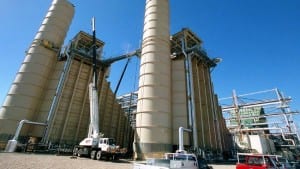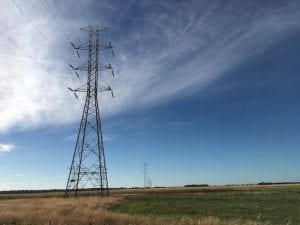A major split has emerged among Australia’s big energy utilities over the proposed delay to the introduction of the 5-minute settlement period on electricity markets – a reform deemed critical to encourage battery storage and demand management, lower costs and to hasten the clean energy transition.
Submissions made to the Australian Energy Market Commission had – till Monday – shown responses more or less along party lines: The owners of legacy assets such coal and gas generation, hydro and networks largely supported the delay, or even wanted it lengthened to 24 months, while the developers of batteries, demand management, software companies and consumer groups insisted no delay was justified.
Now the incumbent pressure for delay has been split by EnergyAustralia and AGL Energy, who both note that the Australian Energy Market Operator in on track with its preparations for five minute settlements (5MS), and who warn that any delays will incur greater costs that will be passed on to consumers.
EnergyAustralia was particularly damming in its assessment of the proposed delay, saying there had been no consultation with the industry and minimal effort had been made to substantiate the need for a change.
(It had been canvassed by the main institutions – the AEMC, AEMO and Energy Security Board – in a letter to energy minister Angus Taylor, but it is still not clear whose idea this was, although The Australia Institute has pointed to the Australian Energy Council).
“This rule change request has been made in haste, lacking industry consultation and evidence,” EnergyAustralia says in its submission, adding that the process has generated confusion and uncertainty.
“It is not clear that there are material aggregate benefits associated with a delay and there is likely to be project cost increases for participant and AEMO which will land on customer bills at a time when there are increasing numbers of customers in hardship.”
Indeed, AEMO – which insists it is ready to implement the changes on schedule – has pointed to additional costs of up to $9 million from any delays.
“AGL does not require a delay to 5MS due to the impact of COVID on our business,” it said in its submission. “We have already committed significant resources to the IT system upgrades to meet the original 5MS transitional period requirements.”
It’s rare that the big utilities do not speak with one voice on such key and fundamental reforms. So, why have EnergyAustralia and AGL split from their peers? The answer may lie in the fact that they are the only major utilities who own or operate battery storage in the National Electricity Market, and have seen the future.
AGL operates the Dalrymple North battery in South Australia, and has firm orders in for 200MW/400MWh of big batteries in NSW, and another 100MW/150MWh battery in Queensland and has hailed the “dawn of the battery age” in Australia. EnergyAustralia operates – under lease – both the Gannawarra and Ballarat big batteries in Victoria.
That means that both companies have had deep insight into the speed and flexibility of battery storage, and how it might be able to assist not just their existing portfolio, but also the reshaping of those portfolios as they traverse the clean energy transition.
AGL and EnergyAustralia have – surprisingly – been joined by Queensland state government owned coal generator Stanwell Corp, which says it sees no need for a delay, noting that it, and the industry, has had plenty of time to prepare.
This view is supported by the likes of Tesla, Enel X, and a host of consumer groups, who say that reform should be accelerated rather than delayed. The governments of South Australia, the ACT, and even the City of Newcastle – all with ambitious clean energy transition policies – have also argued there is no case for delay, and any delay will simply increase costs and slow the transition.
On the other side of the fence sit another of the big three “gentailers” Origin Energy, along with ERM, CS Energy, and the federal government owned Snowy Hydro and its two retailing subsidiaries Red Energy and Lumo Energy. They are joined by Alinta, which pushed for a 24-month delay, and most network owners, with the notable exception of Tas Networks.
What are they afraid of?
Competition is the short answer. The 5MS rule was proposed by energy users who were sick of being ripped off by the gaming of the 30-minute settlement periods, and they also want to be able to compete with expensive peaking generators by making full use of demand response capabilities (dialling down their use and getting paid for it). 5MS is critical for that.
In its submission, the Energy Efficiency Council said that any delay in the introduction of five-minute settlement will materially disadvantage the development and deployment of storage and demand response, which will be increasingly critical for the affordability and reliability of electricity.
Far from being a reason to delay the introduction of 5MW, the EEC says Covid-19 may hasten the need for more reliable fast-response capacity, as reduced energy demand could result in a greater proportion of energy coming from intermittent sources such as wind and solar PV.










